The pharmaceutical industry is up against several challenges when it comes to developing mobile apps for its consumers. According to Deloitte, issues of consumer trust, app design, and regulatory concerns can throw up roadblocks in the very crowded and competitive field of 300,000-plus healthcare or fitness apps on the market. But that is no longer stopping pharma from entering the field. While many in the industry have launched product-based apps and medication reminders, today patient-facing industry apps have evolved to more brand-agnostic disease awareness and management apps that can be used by all patients and provide guidance for improving or managing better health outcomes. These apps are often a collaborative effort, which gives credibility to the app from a consumer point of view.
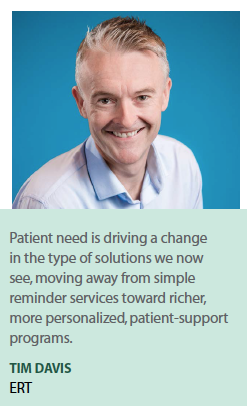 “Many pharmaceutical companies have fallen short in developing viable, sustainable digital health programs," says Tim Davis, VP, digital patient at ERT. “Early patient-based apps, for example those focused on simple adherence reminders, have experienced difficulties in providing sufficient value for patients over extended durations. Therefore, the industry has come to realize that to improve patient health outcomes, the patient-based apps they develop must also provide insights to marketed products and patients’ use of them, as well as address the challenges these patients face. This need is driving a change in the type of solutions we now see, moving away from simple reminder services toward richer, more personalized, patient support programs."
“Many pharmaceutical companies have fallen short in developing viable, sustainable digital health programs," says Tim Davis, VP, digital patient at ERT. “Early patient-based apps, for example those focused on simple adherence reminders, have experienced difficulties in providing sufficient value for patients over extended durations. Therefore, the industry has come to realize that to improve patient health outcomes, the patient-based apps they develop must also provide insights to marketed products and patients’ use of them, as well as address the challenges these patients face. This need is driving a change in the type of solutions we now see, moving away from simple reminder services toward richer, more personalized, patient support programs."
According to the Deloitte study Pharma and the Connected Patient, healthcare apps developed by pharmaceutical companies are trusted by only 32% of surveyed consumers, compared with 76% for apps developed by patient communities, so pharma has started partnering with patient groups to boost their brand trust. Some may even go so far as to purchase digital health companies with the expertise to develop robust disease management apps. Roche’s acquisition of mySugr, considered a class 1 medical device in the United States and EU, is an example of what’s to come, experts say. These joint ventures bring credibility to pharma’s efforts, hopefully heading off any skepticism toward the pharma company’s motivation for developing the app.
“Pharma companies have been successful when they partner on apps with large provider networks or nonprofit organizations, for example, Amgen and the Conquer Cancer Foundation’s award-winning Cancer.Net mobile app," says Alex Seleny, senior director of portals and patient services, McKesson Specialty Health.
Big companies such as Pfizer, AstraZeneca, Sanofi, and GlaxoSmithKline have been pushing the envelope with patient-minded apps like Quitter’s Circle, Moodivator, AZHelps, and the Cold and Flu Tracker.
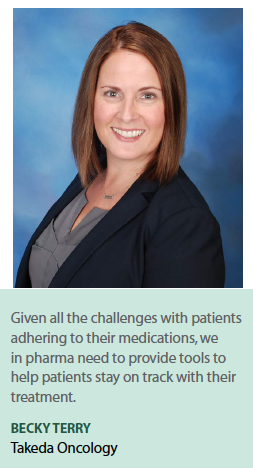 Pfizer has more than 15 healthcare apps listed in the U.S. App Store, with many more available in other countries. Several of these apps are patient-facing. A popular smoking cessation app with its own online community — Quitter’s Circle — is the result of a collaboration between the American Lung Association and Pfizer.
Pfizer has more than 15 healthcare apps listed in the U.S. App Store, with many more available in other countries. Several of these apps are patient-facing. A popular smoking cessation app with its own online community — Quitter’s Circle — is the result of a collaboration between the American Lung Association and Pfizer.
According to a report regarding Quitter’s Circle, 57% of the people surveyed who used the app reported smoking less on the program; 64% said they would recommend the app to others. More than 30,000 people have downloaded the mobile app, and the online Facebook community has more than 170,000 people participating.
Other examples from Pfizer include Living With Cancer, BeLive, HemMobile, and Hemocraft. Using a similar format as Quitter’s Circle, Pfizer’s Living With Cancer program includes the mobile app LivingWith and tools and resources to help support and inspire those who have been affected by cancer. The app includes social elements to help patients organize a community of supporters and caregivers to assist them with their battle against cancer, includes integration to wearable fitness trackers, has functions to help patients keep track of doctor instructions, and provides resources for various different cancer types. Pfizer Oncology provides these tools to all cancer patients to help manage their care during cancer diagnosis and treatment.
“We have a real opportunity when we leverage technology in conjunction with our medicines to potentially have a positive impact on patients and their quality of life," says Dennis Hancock, VP, business technology — digital solutions & emerging technologies, Pfizer. “When you are as patient-focused as we are at Pfizer, these opportunities should be pursued."
Mr. Hancock says engaging with patients and caregivers on the design, utility, and usability of the application experience from the start is a crucial element to building an effective app. “Companies need to allow up-front time to 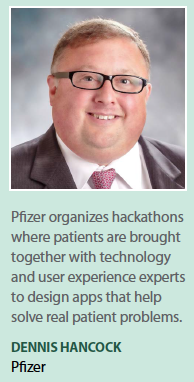 really enable patients to put their thumbprint on the design to help ensure they see value in the app," he says. “Also, they need to ensure that the app development teams are committed to a constant learning cycle where improvements are made on a regular basis, encourage feedback, and then act on it to make the app truly valuable to patients in a sustainable way — this is key to a successful app."
really enable patients to put their thumbprint on the design to help ensure they see value in the app," he says. “Also, they need to ensure that the app development teams are committed to a constant learning cycle where improvements are made on a regular basis, encourage feedback, and then act on it to make the app truly valuable to patients in a sustainable way — this is key to a successful app."
Pfizer organizes hackathons where patients are brought together with technology and user experience experts to design apps that help solve real patient problems. “We have numerous examples and can draw a direct correlation between involvement of patients in the conception phase and value of the app as evidenced by app usage and adherence to treatment, which leads to better patient outcomes," he says.
Takeda is another company involved in several digital health initiatives, including a partnership with U.K.-based Cognition Kit for a study on the effectiveness of a mobile app designed to improve engagement between patients with major depressive disorder (MDD). Participants with diagnosed depression were given an Apple Watch loaded with a cognitive assessment app. The app is designed to improve engagement between patients with MDD and their providers.
“Given all of the challenges with patients adhering to their medications, we in pharma need to provide tools to help patients stay on track with their treatment," says Becky Terry, senior product manager, patient marketing, Takeda Oncology. “There is no one size-fits-all approach to this, and both patients and caregivers are part of the increasing population using apps to help in all aspects of our daily lives, such as managing finances. We need to provide solutions that work within that platform."
Ms. Terry says developing a successful app requires two elements: understanding the patient demographic and knowing that the app will only be one tool in the arsenal toward improving adherence. “There are always going to be some patients who want to track medication by writing it down, so providing calendars, treatment journals, and other tools in addition to an app make the digital tool more likely to appeal to a broader population of patients," she says.
Sunovion Pharmaceuticals has ventured down the digital health path, and in 2016 announced that it was the first to use the investigational Embrace watch by Empatica to aid in partial-onset seizure detection during an anti-epileptic drug clinical trial.
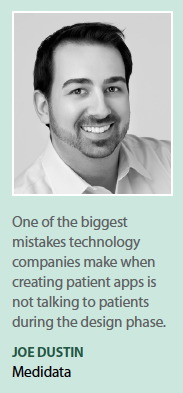 “Ultimately, we expect digital solutions to help contribute toward the goal to significantly empower patients to better manage their symptoms and improve quality of life, especially for those who are living with chronic medical conditions," says Georgia Mitsi, Ph.D., senior director, search evaluation and digital healthcare initiatives, Sunovion Pharmaceuticals. “Sunovion’s intent is to continue to access digital technologies designed first and foremost to help patients," she says. “Patients are at the center of everything we do, and we believe that digital technologies should have a patient-centric focus."
“Ultimately, we expect digital solutions to help contribute toward the goal to significantly empower patients to better manage their symptoms and improve quality of life, especially for those who are living with chronic medical conditions," says Georgia Mitsi, Ph.D., senior director, search evaluation and digital healthcare initiatives, Sunovion Pharmaceuticals. “Sunovion’s intent is to continue to access digital technologies designed first and foremost to help patients," she says. “Patients are at the center of everything we do, and we believe that digital technologies should have a patient-centric focus."
Providing patient-facing apps is important to the industry because if they don’t do it, someone else will, and pharma doesn’t want to miss out on the opportunity of connecting with its consumers through a mobile app interface.
“Apps permit a personalized experience as we get better at tailoring content and creating smart algorithms," says Amy Bucher, Ph.D., behavior change design director, Mad*Pow. “For a relatively low cost, the pharma industry can help patients maximize their outcomes on therapy."
At the same time, apps and digital tools make it easier than ever to collect rich patient data that can enhance our understanding of how people experience illnesses based on their biological, psychological, and contextual characteristics. Pharma can bring digital data into the evidence base to make increasingly effective decisions about how to provide care and perhaps even refine medications. “When we design patient-based apps at Mad*Pow, we always consider how to collect the right amount and type of data to personalize the experience while augmenting critical knowledge," Dr. Bucher says.
Don’t Make This Mistake
Our thought leaders provide their advice on avoiding what they consider as the most common mistakes pharma companies make when creating patient-based apps.
According to Ms. Terry, companies that develop their own apps to support just their own medication are making a big mistake. “Use of a custom app that only allows for a company’s own medication to be tracked is most likely to be a wasted investment," she says. “Instead, we need to partner with an app that already exists for use across all medications. This way the patient can have one place to go to keep on track with every medication he or she may be taking."
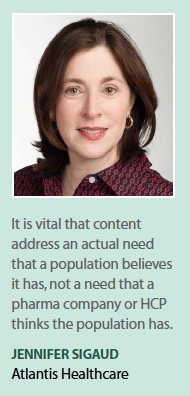 Lack of commitment in keeping the app updated can also be a stumbling block, Mr. Hancock says. The app needs to be kept fresh, and often companies “launch and leave."
Lack of commitment in keeping the app updated can also be a stumbling block, Mr. Hancock says. The app needs to be kept fresh, and often companies “launch and leave."
“We must be committed to a long-term objective if we’re asking patients or caregivers to try a new tool," he says. “The tool or service needs to evolve with features derived from user feedback on an ongoing basis.
“Users vote with their usage and an app or service that doesn’t get updated and evolve frequently will get pushed aside quickly," Mr. Hancock adds.
Taking advantage of all available user feedback loops — prompted, unprompted, and surveyed — is very important. Ensuring that teams agree to measurements and goals in advance with leadership and committing to continuous improvement are probably the most critical components of a successful app, he adds.
A company will know it has developed a successful app by the response from its users. “Apps that work become part of people’s daily lives," Mr. Hancock says. “A good app will get downloaded, opened, and used frequently so those basic measurements are critical."
The first and one of the most crucial mistakes companies can make is not including patients in the design process, most of our experts say. Joe Dustin, principal, Mobile Health at Medidata says this is one of the biggest mistakes technology companies that service the life-sciences industry can make.
David Goldsmith, chief strategy officer, WEGO Health, agrees that not collaborating with patients at every stage in the product’s lifecycle could be fatal to the success of an app. However, he says, pharma companies are getting smarter about listening to patients. “Companies are doing ethnographic research, gathering insights, convening focus groups, and taking other steps to better understand how patients navigate one or more aspects of their health," he says. “But only a small number of companies have truly embraced design thinking and adopted a methodology of innovation that puts the patient at the center of the process and not at the end."
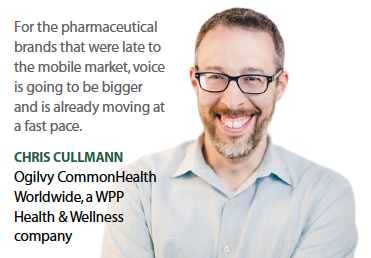 As a result, the digital health market is flooded with apps that patients never adopt or use only briefly. Companies that embrace design thinking, and that work with patients as co-creators at each stage in the design process stand a much better chance of bringing products to market that will delight patients, gain meaningful traction, and get used over time, Mr. Goldsmith adds.
As a result, the digital health market is flooded with apps that patients never adopt or use only briefly. Companies that embrace design thinking, and that work with patients as co-creators at each stage in the design process stand a much better chance of bringing products to market that will delight patients, gain meaningful traction, and get used over time, Mr. Goldsmith adds.
On the clinical trial side, it is also critical to put patients first in order to really understand their daily lives and challenges, Mr. Davis says.
“Pharma companies must consider what patients need, not just the actions they want patients to take, so that patients remain engaged throughout the program," he says. “Identifying technology that can address specific patient challenges and fits with their lifestyle is absolutely essential."
It’s also important for pharma companies to identify specific, measurable objectives for both the patient population and the organization. This will enable trial sponsors to evaluate possible approaches to apps and other technologies that can help them meet these objectives and have the greatest impact on health outcomes.
Similarly, it’s important to manage the initial program scope to limit development timelines and prevent endless cycles of review and refinement. “Pharma is increasingly moving toward a minimum viable product — MVP — approach, whereby initial development focuses only on the program’s core requirements," he says. “This approach expedites the route to market launch, saves time and money, and critically, allows pharma companies to gain insights to program usage that can drive refinements in additional functionalities and subsequent version releases."
Scott Connor, VP of corporate marketing and strategy at Acurian, says the most crucial element when designing any app is to create something that has a singular purpose. “It sounds simple, but too many apps try to do too many things in an effort to increase uptake and stickiness," Mr. Connor says. “But what this does is make the app undifferentiated, confusing, and ultimately extinct."
Mr. Connor says Acurian’s latest patient-centered app has a singular and very specific purpose: to help patients with Crohn’s and ulcerative colitis track their flare symptomology on a daily basis. While the app leverages the essential 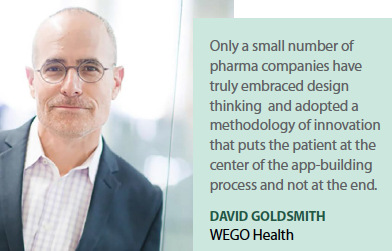 best practices of app development — simple and elegant UI/UX, gamification/rewards to encourage daily use and CMS-driven customization — its sole and stated purpose is to help the patient monitor mood and disease symptoms. That way, as the patient enters a flare danger zone, it enables that patient to alert a pre-selected research site. Since flares are episodic and unpredictable, but are required to enter most IBD trials, it is imperative for the app to focus only on the most critical aspect of qualification. “Resisting the urge to add more bells and whistles is one of the hardest things to do, but a successful patient-centered app will stay true to the philosophy that less is more," he says.
best practices of app development — simple and elegant UI/UX, gamification/rewards to encourage daily use and CMS-driven customization — its sole and stated purpose is to help the patient monitor mood and disease symptoms. That way, as the patient enters a flare danger zone, it enables that patient to alert a pre-selected research site. Since flares are episodic and unpredictable, but are required to enter most IBD trials, it is imperative for the app to focus only on the most critical aspect of qualification. “Resisting the urge to add more bells and whistles is one of the hardest things to do, but a successful patient-centered app will stay true to the philosophy that less is more," he says.
A critically important component for apps and other digital health tools is the relevance of the content for each individual, says Jennifer Sigaud, managing director, Atlantis Healthcare. “On the surface an app can look shiny and exciting and might initially incite engagement but if the content isn’t relevant and doesn’t resonate with the individual, the user will not continue to engage over time," she says. “Our experience tells us that content is king."
It’s vital that the content address an actual need that a population believes it has, not a need that a pharma company or HCP thinks the population has. Research should be conducted to understand the beliefs and barriers a patient population may experience in relation to condition and treatment management. “For each person who engages with our health apps, we assess their individual support needs through a brief series of questions," she says. “This ensures that the content we deliver is relevant to each person’s needs."
Kate Perry, Psych.D., director of behavioral science at Atlantis Healthcare, believes an app is only as useful as the content it provides and the content is only as meaningful as the insights that informed it. The most effective digital interventions are those designed with clinical and theoretical experts in behavior change and human-centered design.
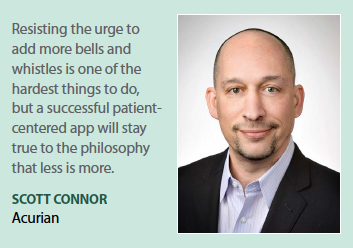 “Gamification techniques can help with extrinsic motivation to engage users, but these techniques are unlikely to sustain engagement over the long term," Dr. Perry says. “The key is to address intrinsic motivations, especially the personal beliefs driving the behavior. Without this belief-based design approach, the apps are simply games and not effective healthcare solutions."
“Gamification techniques can help with extrinsic motivation to engage users, but these techniques are unlikely to sustain engagement over the long term," Dr. Perry says. “The key is to address intrinsic motivations, especially the personal beliefs driving the behavior. Without this belief-based design approach, the apps are simply games and not effective healthcare solutions."
Today’s apps are being integrated into other healthcare supports and tools, which is an interesting area of development that ultimately helps to make patient engagement in their healthcare as seamless and integrated into their daily lives as possible. For example, patient support apps that send alerts and instructions to an on-the-phone nurse team in response to certain patient behavioral cues, Dr. Perry says.
The Future of Patient-based Apps
Apps are transforming into much more than games and tracking devices. The industry is heading toward digiceuticals, or digital health programs that can be tailored and optimized for individual patients but still delivered at scale via mobile.
Digital therapeutics are a new category of apps that help treat diseases by modifying patient behavior and providing remote monitoring to improve long-term health outcomes.
The key difference is that digital therapeutics implement treatment programs tailored to specific ailments, especially major chronic diseases like diabetes, heart disease, high blood pressure, and pulmonary diseases such as COPD. 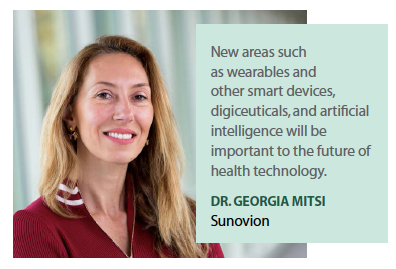 Because patient behavior is so crucial in preventing and limiting the severity of these life-threatening illnesses, the early evidence is that these digital health programs, often combined with human coaching/interaction, can make a significant difference in health outcomes.
Because patient behavior is so crucial in preventing and limiting the severity of these life-threatening illnesses, the early evidence is that these digital health programs, often combined with human coaching/interaction, can make a significant difference in health outcomes.
According to Pear Therapeutics its deal with Novartis to work together on the development of two digital therapeutics for multiple sclerosis and schizophrenia is the first time a pharma company has made a development deal with a digital therapeutic, and this is just the beginning of what lies ahead for patient-based apps.
At Pfizer, Mr. Hancock says the company is already deploying sensors and wearables in its apps and solutions with reasonable frequency and this is proving valuable as it may help patients have more meaningful conversations with their doctors. “I expect that personalization, conversational interfaces, and artificial intelligence will be instrumental moving forward to further assist patients by recognizing them and their conditions as unique," he says. “Further out, while there are many obstacles to overcome, technologies like blockchain hold the potential to give patients more control over the lifecycle of such data and unlock possibilities around direct data donation. Additionally, this holds the potential to reduce some of the barriers to data integration in the EMR and EHR space."
Dr. Mitsi points to wearables and other smart devices, digiceuticals and Software as a Therapy, artificial intelligence, and other advanced analytics for population health management as areas that will be important to the future of health technology. These, she says, are key areas for the pharma industry to continue to explore as digital innovation provides an opportunity to connect on a different level and in new ways with key stakeholders, including patients, as well as physicians and payers.
“Wearables and smart devices could contribute to population health management, improve everyday care, and enhance clinical trial design, due to the inclusion of objective data and continuous monitoring," Dr. Mitsi says. “Digiceuticals has the potential to improve people’s lives dramatically especially in somewhat neglected therapeutic areas like mental health. AI could improve process automation and allow doctors to focus on rebuilding meaningful relationships with patients."
More apps and digital tools will continue to be tested in clinical trials, and go before the FDA for clearance as medical devices, Dr. Bucher of Mad*Pow says.
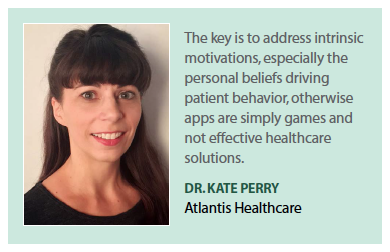 This focus on science will help apps break through the cluttered iTunes and Play stores, which research has shown deters people from even trying an app. “Having FDA clearance may also make it more likely that providers will recommend apps to patients, or even use them with patients," Dr. Bucher says. “We’ve seen that when a physician recommends an app, people are much more likely to try it and stick with it."
This focus on science will help apps break through the cluttered iTunes and Play stores, which research has shown deters people from even trying an app. “Having FDA clearance may also make it more likely that providers will recommend apps to patients, or even use them with patients," Dr. Bucher says. “We’ve seen that when a physician recommends an app, people are much more likely to try it and stick with it."
Concern about FDA regulations has made pharma companies cautious about what they can provide in their digital tools and limited their ability to put the best quality app in front of patients. As soon as a few companies decide to have their apps regulated as medical devices, others will follow suit. FDA oversight will give them more freedom to offer patients a meaningful digital intervention within an established legal and regulatory framework.
On the other side of the spectrum, patients will use commercial apps and devices to cobble together a digital health system that works for them, separate from pharma efforts. With companies such as Apple competing in the space, there’s no doubt patients will be drawn to the sexy consumer tech and figure out how to adapt it for their health needs. Anyone building a healthcare app or tool should pay attention to compatibility with the top commercial products, Dr. Bucher says.
As devices such as Amazon Echo and Google Home are changing how people interact with their homes, order products, and have exchanges with those in their own homes, the smart speaker is bound to become part of the family’s healthcare program, says Chris Cullmann, head of digital at Ogilvy CommonHealth Worldwide, a WPP Health & Wellness company.
“The new connected home is a beachhead for both support and behavioral intervention," he says. “For the pharma brands that were late to the mobile market, voice is going to be bigger and is already moving at a fast pace."
Mr. Cullmann says like apps before them, the skills (Skills for Amazon Echo and Actions for Google Home) for these devices are provided by third parties to extend their value, give new functionality, and offer consumers new capabilities through software. The skills are brilliantly engineered to leverage a voice and response that patients are already on familiar terms with. For the pharmaceutical industry, this is a springboard to leverage the trust and permission already provided to Amazon and Google and a device our patients and caregivers are already asking for help from.
“Our agency has seen a huge amount of interest and new projects to deliver services and support to patients, caregivers, and physicians through these new app platforms," Mr. Cullmann says. “Amazon and Google are not releasing info on the number of devices sold this year, but recent studies suggest that one in six Americans have such a device at home. Numbers are growing, with Amazon, Google, Apple, and Microsoft aggressively courting an interested and motivated audience."(PV)
~~~~~~~~~~~~~~~~~~~~~~~~~
Patients’ Voices: Apps
 Grace Cordovano
Grace Cordovano
Enlightening Results
Cancer Patient Advocate
@GraceCordovan
Patients and care partners need to be engaged and included in the design, development, and launch of initiatives that rely on technologies such as apps. Pharma must be meticulous in understanding patients’ values, needs, and preferences. This requires asking patients and care partners for their insights and expertise on living, or caring for someone, with a diagnosis. Building and executing an app based on assumptions of patients’ values, preferences, and needs is one of the most common fatal errors.
 Starla Espinoza
Starla Espinoza
MS Patient Leader
Multiple Sclerosis Patient
facebook.com/curemsnow
Digital tools and apps are even more ways to connect with patients and keep up with the trends of keeping patients informed.
 Dima Hendricks
Dima Hendricks
Multiple Sclerosis Patient
facebook.com/curemsnow
The pharmaceutical industry tends to overcomplicate clinical studies. Simplicity is key. App users stray away from ambitious operating systems. That’s why it’s imperative for a patient-centered app to be intuitive and simplistic.
 Jen Horonjeff, Ph.D.
Jen Horonjeff, Ph.D.
Founder, Savvy Cooperative
Juvenile Arthritis Patient
@jhoronjeff
The single biggest mistake pharma is making in creating patient-based apps is to make them without patient input. Industry creates products and services that were never developed or tested with patients, and then complain about patient noncompliance. The term noncompliance gets thrown around like the patient makes an active choice to not do something, when in reality the systems and solutions that are being created don’t work for them. Every other industry outside of healthcare already gets this. No consumer brand would go to market without user-testing and focus groups to make sure they were on the right track. But the healthcare industry grew accustomed to patients being the passive recipients of care and is now scrambling to adjust and develop solutions to keep patients engaged. I can’t stress enough, if you’re developing solutions for patients, they must be developed with patients.
 Ilana Jacqueline
Ilana Jacqueline
Patient Advocate, Author, Speaker
Primary Immune Deficiency Disease Patient
@IlanaJacqueline
New apps and digital tools can benefit the industry in multiple ways: by collecting essential patient biometrics, helping patients to better track and evaluate disease patterns and to deliver instant health education to the patient communities who need them most.
 Barby Ingle
Barby Ingle
President of International Pain Foundation (iPain)
Central Pain Syndrome Patient
@BarbyIngle
Apps and other digital tools that engage patients should matter to pharmaceutical companies because activated patients have lower hospital rates following treatment, better disease prevention, and greater success in treatment. The more pharma creators are engaged with the end users the better their research, clinical decisions, creation of more effective medications will be lowering the financial burden.
 Candace Lerman
Candace Lerman
Health Policy Consultant
Immune Thrombocytopenia Patient
@RareCandacet
Apps are a great way to connect with patients and provide them with tools and information. It is critical that when forming these apps and digital tools, a compliance team is heavily involved so there are no legal issues.
 Christel Oerum
Christel Oerum
Diabetes Strong
Diabetes Patient
@TheRealFitBlog
Digital health tools are an excellent way to send medication reminders, track medication taken, or simply have the user engage with your company. It can also be a way of letting people know that they’re not alone. The diabetes-focused company One Drop is an example since they provide both product, community, and support.
 Whitney Petit
Whitney Petit
Epilepsy Patient Leader
Epilepsy Patient
@cfepilepsy
Apps should matter to pharma companies because we live in an age where digital accessibility is at the forefront. If pharma misses the opportunity to connect with patients on this platform, they will lose a market for connectivity.
















